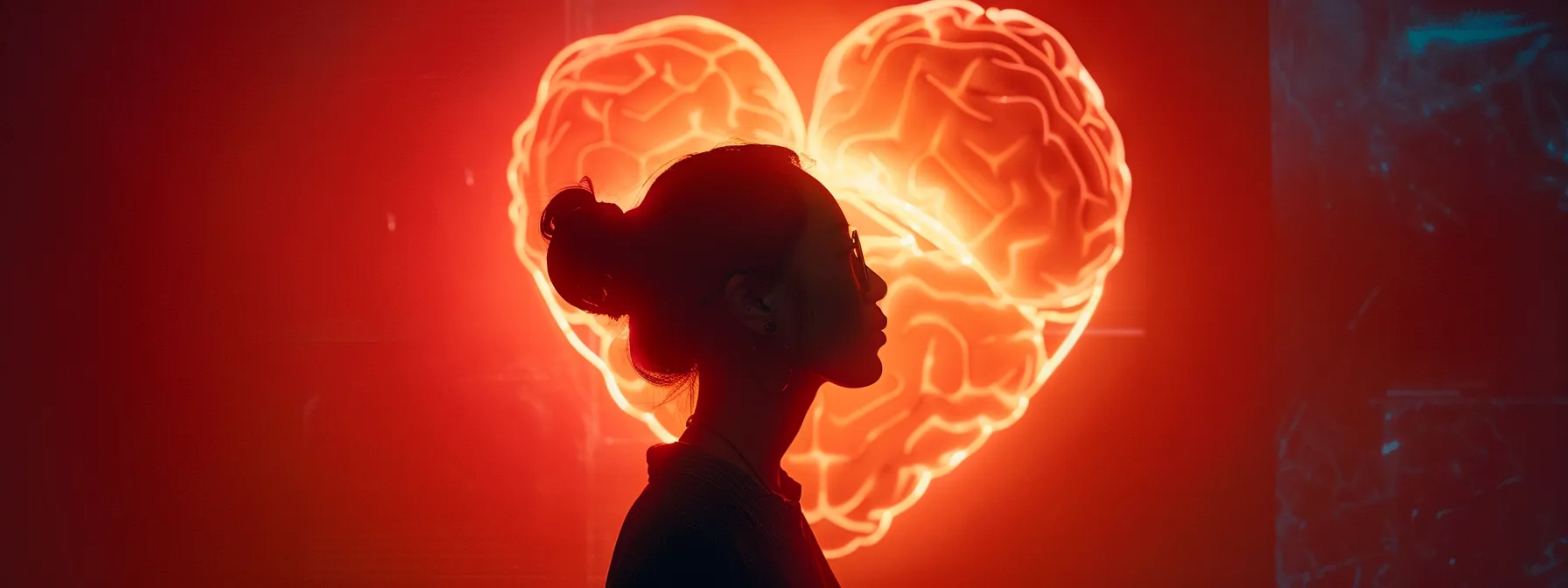Uncategorized
Enhancing Trauma Recovery Through HeartMath Interventions
Trauma can lead to persistent issues like fatigue, addiction, and dissociation, making recovery seem challenging. HeartMath interventions offer practical techniques to enhance your healing process. In this post, you’ll explore the connection between trauma and heart-brain coherence, learn key HeartMath techniques to support recovery, and see how these methods can be applied in daily life. By engaging with this content, you will gain valuable insights to address your trauma-related challenges and improve your overall well-being. Start your journey to healing with HeartMath today.
Understanding the Connection Between Trauma and Heart-Brain Coherence

Trauma significantly impacts the nervous system, creating a disconnect that can hinder emotional recovery. You will learn about how heart-brain communication plays a crucial role in healing and why achieving coherence is vital for emotional well-being with Psych-K Programs. These insights are particularly relevant for individuals experiencing collective trauma, such as those in foster care or navigating challenges in marriage, including the care provided by a nurse practitioner.
How Trauma Affects the Nervous System
Trauma can severely disrupt the nervous system, leading to heightened stress responses and emotional pain. This disruption may manifest as anxiety, depression, or chronic stress, making coping more challenging. Recognizing how Stress Management trauma influences your nervous system is essential for developing effective recovery strategies.
Your body’s stress response is activated in response to trauma, which can create a continuous loop of hyperarousal. This physiological state impairs your ability to think clearly or respond to daily challenges Stress Management, making board certification in trauma-informed care particularly relevant for healthcare professionals. Understanding this process helps you seek interventions that can enhance recovery.
Heart-brain coherence is a key concept in understanding how to heal from trauma with Heal2 Home. By fostering a more balanced communication process between your heart and brain, you facilitate emotional recovery and resilience. These strategies contribute not only to alleviating stress but also to enriching your coping mechanisms in dealing with past pain:
The Role of Heart-Brain Communication in Healing
Heart-brain communication plays a vital role in your healing process from trauma, influencing your ability to manage emotions effectively. When you engage in trauma-focused cognitive behavioral therapy, you are encouraged to recognize how your thoughts and feelings impact physiological responses. This understanding enhances emotional regulation, allowing you to address issues like anger and emotional dysregulation more constructively.
By cultivating heart-brain coherence, you can improve your emotional resilience and enhance the power of psychotherapy. This coherence allows for better alignment between your emotional state and cognitive processes, which is essential for overcoming challenges like codependency. When you achieve this balance, you empower yourself to respond thoughtfully rather than react impulsively to stressors related to past trauma.
The Importance of Coherence for Emotional Well-Being
Coherence between your heart and brain is crucial for enhancing emotional well-being, particularly when rebuilding from trauma. This alignment nurtures your ability to process memories associated with stressful experiences, enabling you to navigate feelings more effectively. As you work with a mental health counselor, understanding heart-brain coherence can facilitate emotional clarity, ultimately improving your recovery journey.
For health professionals, recognizing the importance of heart-brain coherence in clinical psychology offers valuable insights into fostering emotional resilience in clients. When you achieve coherence, you enhance your capacity to manage stress and establish healthier coping mechanisms. This holistic approach benefits both practitioners and individuals seeking personal development, creating a foundation for sustainable emotional health.
Implementing HeartMath interventions can significantly contribute to a sense of coherence, promoting emotional balance and stability. By integrating techniques that foster this alignment, you enable yourself to respond rather than react to emotional triggers. This practice empowers you as you work towards healing, making it an effective strategy for anyone impacted by trauma.
Trauma leaves a mark that affects both heart and mind. Now, let’s explore how HeartMath interventions can help heal these wounds.
Introducing HeartMath Interventions for Trauma Recovery

HeartMath interventions offer practical techniques aimed at supporting trauma recovery by enhancing neurophysiology and emotional regulation. These methods are grounded in scientific evidence, demonstrating their effectiveness in cognitive processing therapy. For patients and caregivers, implementing HeartMath can significantly improve emotional resilience and facilitate better coping strategies, making it a valuable component in recovery programs.
Overview of HeartMath Techniques
HeartMath techniques are valuable tools for enhancing trauma recovery, focusing on how attention and emotional awareness can influence your healing process. By applying these methods, you can learn to manage grief and stress responses more effectively. The techniques are based on solid neuroscience, which provides a framework for understanding how your heart-brain communication impacts emotional regulation.
One core technique is the Heart-Focused Breathing exercise, which emphasizes aligning your breath with your heart rate. This practice encourages you to redirect your attention inward, fostering a greater sense of calm and helping to alleviate symptoms associated with anxiety or a personality disorder. Through consistent practice, you cultivate a personal narrative that prioritizes healing and emotional resilience.
Another key approach involves using the Quick Coherence Technique, designed to shift emotional states and enhance your ability to cope with difficult situations. This technique guides you in recognizing your emotional triggers and intentionally transforming your responses. Incorporating these strategies into your routine creates a supportive environment for trauma recovery, enabling you to engage more positively with your experiences:
Scientific Evidence Supporting HeartMath Methods
The scientific evidence supporting HeartMath methods highlights their effectiveness in facilitating trauma recovery. Studies indicate that interventions such as Heart-Focused Breathing enhance emotional regulation, which is crucial for individuals engaged in acceptance and commitment therapy. By integrating these breathing techniques into therapeutic practices, you can improve coping mechanisms and reduce symptoms of anxiety and emotional distress.
Research also links HeartMath techniques with psychodynamic psychotherapy outcomes, emphasizing the value of heart-brain coherence in addressing deep-rooted emotional issues. When you apply these practices, you could experience a shift in your emotional state, making it easier to engage in challenging discussions and processes of desensitization. This seamless integration not only enriches your therapy experience but also deepens your understanding of your emotional landscape.
Additionally, incorporating HeartMath methods aligns with strategies endorsed by relationship experts like John Gottman. His research on emotional intelligence within relationships underscores the importance of effective emotional regulation. By utilizing HeartMath interventions, you empower yourself to navigate interpersonal challenges with greater calmness and clarity, thereby enhancing the quality of your connections and contributing to a more successful recovery journey.
Benefits of Using HeartMath in Recovery Programs
Using HeartMath interventions in recovery programs offers significant benefits for emotional regulation and mood improvement. These techniques help you manage feelings of anxiety and panic, reducing the likelihood of panic attacks. By integrating HeartMath training into your daily routine, you can gain better control over your stress responses and enhance your overall emotional well-being.
Another key advantage of HeartMath interventions is their ability to promote a healthier emotional state during trauma recovery. You can effectively train your mind and body to respond to stressors in a more balanced way. This process directly contributes to alleviating symptoms associated with anxiety, helping you peacefully navigate your emotional landscape.
Moreover, HeartMath techniques provide practical tools for developing stronger coping strategies, especially when faced with triggers that may induce panic or distress. As you engage in these structured practices, you equip yourself with the necessary skills to handle challenging situations. This consistent approach enables you to create a supportive environment for healing and supports your journey towards emotional stability:
HeartMath offers powerful tools for those seeking to heal. Let’s explore the key techniques that can support your journey to recovery.
Key HeartMath Techniques to Support Healing

Key HeartMath Techniques to Support Healing
Practicing the Coherence Technique, using the Heart Lock-in Method, managing stress with Heart-Focused Breathing, and building resilience through HeartMath practices are essential strategies for enhancing trauma recovery. These methods not only promote relaxation but also provide valuable tools for therapists working with individuals facing crises or dual diagnosis, offering a path to improved emotional understanding and stability.
Practicing the Coherence Technique
Practicing the Coherence Technique is essential for enhancing your emotional regulation and overall resilience during trauma recovery. This approach involves synchronizing your heart rate with your breath, which can create a calming effect on your nervous system. As you focus on your heart’s rhythms, you will also find that eye movement can help facilitate a deeper sense of connection and clarity in your thoughts, making it easier to process emotional challenges associated with trauma.
The Coherence Technique can be particularly beneficial in settings such as drug rehabilitation, where emotional stability is crucial for recovery. By implementing this technique, you can cultivate a more balanced emotional state, enabling you to respond to stressors constructively. Practitioners often integrate elements of motivational interviewing with this technique, allowing you to explore your emotional triggers in a supportive environment while working toward your recovery goals.
Achieving coherence through this technique may also serve as a valuable addition to your heartmath certification training. As you deepen your understanding of heart-brain communication, you unlock your potential for improved well-being. Practicing the Coherence Technique consistently allows you to develop more effective coping strategies, ultimately enhancing your emotional health during your trauma recovery journey.
Using the Heart Lock-in Method
The Heart Lock-in Method is a powerful technique that helps you cultivate emotional stability, making it especially beneficial for licensed mental health practitioners working with trauma clients. By focusing your attention on your heart while breathing slowly and deeply, you can create a state of calm that enhances emotional regulation. This method empowers you as a parent or veteran to better manage stress responses, enabling you to navigate life’s challenges with greater wisdom and clarity.
This technique also incorporates elements of neurofeedback, which can be particularly effective in tracking your emotional responses. As you practice the Heart Lock-in Method, you’ll find that it encourages awareness of your emotional triggers, allowing you to address underlying issues constructively. By developing this skill, you improve your ability to respond rather than react, making your interactions more positive and supportive.
Incorporating the Heart Lock-in Method into your routine can significantly enhance your trauma recovery journey. This practice not only facilitates emotional healing but also provides a framework for continuous personal growth. Whether you are self-advocating as a licensed mental health professional or supporting a loved one, mastering this technique equips you with essential tools for achieving a balanced emotional state and fostering resilience in everyday life.
Managing Stress With Heart-Focused Breathing
Managing stress with Heart-Focused Breathing is a vital technique for enhancing trauma recovery. By consciously directing your attention to your breath and heart, you can create a calming effect that reduces anxiety and fosters emotional stability. This practice not only supports your mental clarity but also complements the holistic approaches used by practitioners such as physicians and nutritionists, who emphasize the importance of holistic health in recovery.
When you engage in Heart-Focused Breathing, you empower yourself to improve your emotional resilience. By integrating this technique into your daily routine, you can develop better social skills and interactions, which are essential for building supportive relationships during your healing journey. The benefits of consistent practice extend beyond personal well-being; they also enrich the therapeutic process with professionals like reiki practitioners, enhancing your overall recovery experience.
Applying Heart-Focused Breathing can be a transformative element in your trauma recovery strategy. As you master this technique, you cultivate a greater sense of inner empowerment that allows you to respond constructively to stressors. This proactive approach to mental health ultimately enables a more positive outlook, encouraging you to navigate the challenges associated with trauma effectively.
Building Resilience Through HeartMath Practices
Building resilience through HeartMath practices requires a focused approach that enhances your emotional well-being. Utilizing techniques developed by the HeartMath Institute, such as the Heart-Focused Breathing and the Quick Coherence Technique, you can actively engage your mind to process and heal from past traumatic experiences, including those related to violence. By incorporating these methods, you facilitate a supportive environment for behavioral activation, where you take tangible steps toward recovering from trauma.
As you explore HeartMath practices, you develop practical skills that promote emotional balance and reduce stress. This approach enhances your understanding of your emotional landscape, enabling you to constructively manage your feelings. Engaging in consistent practice can strengthen the resilience needed to overcome challenges associated with trauma, such as increased anxiety or difficulty in forming healthy relationships.
Achieving certification in HeartMath techniques adds value to your trauma recovery journey by equipping you with structured strategies to flow through the healing process. It empowers you to navigate emotional hurdles effectively, guiding you toward healthier coping mechanisms. By fostering resilience through these evidence-based methods, you not only support your own healing but also set the foundation for transformation in your interpersonal relationships and overall quality of life.
HeartMath techniques lay a strong foundation for healing. Now, let’s see how you can weave these methods into your everyday life for lasting change.
Applying HeartMath Methods in Daily Life

Applying HeartMath Methods in Daily Life
Integrating HeartMath techniques into your daily routines allows for enhanced trauma recovery. You will explore practical ways to incorporate these methods alongside art therapy and cognitive behavioral therapy to support your cognition. Addressing challenges in maintaining your practice is crucial, as is creating support systems that enable continued recovery following experiences of domestic violence. Each of these areas contributes significantly to fostering your creativity and emotional resilience.
Integrating Techniques Into Daily Routines
Incorporating HeartMath techniques into your daily routine can significantly enhance your emotional resilience and support your trauma recovery. Start by dedicating a few minutes each day to practice heart-focused breathing, which promotes a state of calm and clarity. You may find that this regular practice not only reduces anxiety but also boosts your overall confidence and emotional intelligence.
Another effective strategy is to integrate eye movement desensitization and reprocessing (EMDR) techniques alongside HeartMath exercises. This combination allows you to process past traumas more effectively by leveraging both emotional regulation and cognitive restructuring. You can create a structured approach, combining these methods daily to foster a deeper sense of empathy towards yourself and others during your healing journey.
Additionally, consider using biofeedback tools to monitor your progress with HeartMath practices. These devices help you visualize your physiological responses, reinforcing the connection between your heart and mind. By acknowledging these insights, you can further refine your techniques, ensuring they remain effective and relevant to your emotional needs:
- Practice daily heart-focused breathing.
- Combine EMDR with HeartMath exercises.
- Utilize biofeedback tools for tracking progress.
Overcoming Challenges in Maintaining Practice
Maintaining a consistent HeartMath practice can present challenges, especially when life becomes overwhelming. You may find it difficult to prioritize your breathing exercises or other techniques during stressful periods. Understanding this struggle is part of building your knowledge around trauma recovery; recognizing the emotional and behavioral patterns that trigger setbacks allows you to anticipate challenges and create actionable plans to overcome them.
Incorporating spirituality into your daily routine can provide additional support for maintaining your HeartMath practices. By connecting your emotional healing to a broader sense of purpose, you empower yourself to remain committed to your recovery. This integration not only fosters resilience but also reinforces your belief in the benefits of breathing techniques, helping you cultivate a healthier mindset that promotes continuity in your practice.
Another key aspect is to leverage community support and resources that align with the principles of “health at every size.” Surrounding yourself with individuals who understand the importance of emotional well-being and trauma recovery can enhance your motivation. Engaging in discussions about effective strategies or sharing experiences can help you stay accountable, driving you to persevere through the challenges and deepen your commitment to your HeartMath journey.
Creating Support Systems for Continued Recovery
Creating support systems is essential for your continued recovery from childhood trauma or injury. Surrounding yourself with compassionate individuals who understand your experiences fosters a therapeutic relationship that can deepen your healing process. This safe environment allows you to share your fears and challenges, ultimately strengthening your emotional resilience.
If you have faced homelessness, finding community groups or support networks can significantly enhance your recovery journey. These connections not only provide practical resources but also a sense of belonging. Engaging with peers who share similar experiences can promote understanding and empathy, crucial components for healing.
Consider participating in group therapy sessions or workshops that focus on trauma recovery. These settings encourage open discussions and provide opportunities to develop meaningful relationships with others navigating similar paths. Establishing these connections reinforces your coping strategies and motivates you to persist in your healing process.
You’ve seen how HeartMath methods can reshape your daily life. Now, discover how others have transformed their experiences with these practices and achieved remarkable success.
Success Stories With HeartMath Interventions

You will discover personal experiences of trauma recovery through HeartMath interventions, illustrating the practical application of these methods in real-life scenarios. Clinical case studies will demonstrate the effectiveness of HeartMath techniques in addressing issues related to sleep, anger management, and neurodiversity. Additionally, testimonials from health professionals will highlight the benefits of these skills, providing you with valuable insights into the transformative power of HeartMath practices.
Personal Experiences of Trauma Recovery
Individuals recovering from military sexual trauma have reported significant improvements after integrating HeartMath interventions into their healing practices. By using techniques such as heart-focused breathing and meditation, these individuals have found a way to manage traumatic memories more effectively. This combination allows for a deeper emotional processing, enabling them to reclaim a sense of control over their experiences.
Many people have also discovered the benefits of combining HeartMath with nutrition to enhance their emotional stability during recovery. Eating well not only supports overall health but also influences how well you can cope with stress. Incorporating mindfulness techniques from HeartMath alongside nutritious eating habits strengthens the body’s resilience, fostering a holistic approach toward overcoming past traumas.
Attachment theory plays a critical role in understanding how trauma affects relationships. Through HeartMath interventions, individuals have learned to build healthier attachments by developing better emotional regulation skills. This newfound ability allows them to navigate their relationships with greater confidence, addressing issues stemming from their past while fostering deeper connections with others.
Clinical Case Studies Demonstrating Effectiveness
Clinical case studies have demonstrated the effectiveness of HeartMath interventions in facilitating trauma recovery, particularly within somatics. Clients report significant improvements in emotional regulation when these techniques are integrated into therapeutic practices, enabling individuals to process trauma more effectively. By understanding the concept of heart-brain coherence, they can navigate their emotions and enhance their overall resilience.
One notable example involved a facilitator who utilized HeartMath techniques during their internship in a trauma-focused program. Participants engaged in heart-focused breathing exercises, which fostered a calm atmosphere conducive to emotional processing. As a result, individuals experienced reduced symptoms of anxiety and a greater ability to cope with their past experiences, illustrating the benefits of this holistic approach to healing.
Additionally, another case highlighted the impact of HeartMath interventions on clients dealing with chronic disease related to trauma. Patients learned to apply these practices to manage their stress responses, improving their quality of life. The incorporation of HeartMath methods allowed them to develop healthier coping mechanisms, demonstrating the potential for these techniques to contribute meaningfully to trauma recovery within various contexts.
Testimonials From Health Professionals
Health professionals have observed remarkable outcomes when integrating HeartMath interventions into their treatment approaches for patients facing psychological trauma. For those dealing with terminal illness, the application of heart-focused techniques has been shown to improve emotional regulation and reduce anxiety, enabling patients to find greater peace during a challenging journey. By fostering heart-brain coherence, professionals report enhanced support for emotional stability, helping clients navigate their circumstances with resilience.
In cases of borderline personality disorder and eating disorders, therapists have successfully used HeartMath practices to help clients develop healthier coping strategies. These techniques create a structured framework for clients to process their emotions and manage intense feelings. Practitioners note significant improvements in emotional self-regulation, ultimately leading to more effective family therapy sessions that cultivate supportive communication among family members.
Through clinical experiences, mental health professionals recognize that HeartMath interventions can be a turning point for individuals struggling with deep-rooted psychological issues. Clients who incorporate these practices experience enhanced emotional clarity and a greater capacity to address their trauma. This holistic approach not only benefits their recovery but also paves the way for healthier relationships and improved overall emotional well-being.
Many have found relief and strength through HeartMath. Now, it’s time for you to begin your own healing journey with these proven methods.
Starting Your Healing Process With HeartMath

To start your healing process with HeartMath, you can find certified HeartMath practitioners who specialize in somatic experiencing within health care settings, including clinics. Accessing resources for self-practice will empower you to utilize these techniques independently. Additionally, setting clear goals and monitoring your progress with a doctor of psychology or nursing professional can enhance your trauma recovery journey through effective HeartMath interventions.
Finding Certified HeartMath Practitioners
Finding certified HeartMath practitioners is crucial as you embark on your healing journey. These professionals are trained to integrate HeartMath techniques with other therapeutic modalities, such as acupuncture and physical therapy, to enhance your recovery process. By collaborating with a practitioner, you can leverage their expertise to improve your physiological responses to trauma while fostering greater awareness of your emotional landscape.
When searching for a certified HeartMath practitioner, consider their background in mental health, as well as their ability to work with diverse populations, including those with unique sexual orientations. Professionals who are knowledgeable about various needs can tailor their approach to suit your specific circumstances, ensuring that you receive comprehensive support throughout your healing journey. This personalized care can greatly enhance your emotional and physical well-being.
Engaging with a practitioner allows you to establish a trusting relationship where you can openly address your pain points and challenges. These professionals use HeartMath interventions to guide you toward improved emotional regulation, helping you gain more control over your responses to stress. As you deepen your understanding of how trauma affects your physiology, you empower yourself to make meaningful strides in your recovery.
Accessing Resources for Self-Practice
Accessing resources for self-practice is vital as you begin your healing journey with HeartMath interventions. You can find various online platforms that offer guided exercises and workshops specifically tailored for trauma recovery. These resources are particularly beneficial if you are navigating challenges related to substance abuse or seeking to improve your mental health, as they provide a structured approach to enhancing emotional regulation.
Engaging in self-practice using materials provided by certified HeartMath practitioners can significantly support your recovery process. For example, you can access engaging videos or workbooks that teach techniques such as heart-focused breathing and the Quick Coherence Technique. These tools can empower you to manage feelings and improve your emotional responses during couples therapy or individual sessions, enhancing the effectiveness of your overall treatment plan.
Additionally, working with a licensed clinical social worker (LCSW) who incorporates HeartMath methods can further enhance your self-practice experience. They can guide you in utilizing practical resources tailored to your specific needs, whether you are dealing with trauma or other emotional difficulties. By integrating these approaches, you cultivate a healthier emotional landscape that supports your journey toward stability and resilience.
Setting Goals and Monitoring Progress
Setting clear goals is vital for your healing journey using HeartMath interventions. Whether you are focusing on managing transgenerational trauma or enhancing life satisfaction, specific goals allow you to measure your progress effectively. By collaborating with a licensed clinical psychologist, you can outline your objectives in the context of cognitive therapy, ensuring that your approach is tailored to your unique needs.
Monitoring progress is equally important in your trauma recovery process. Regularly assessing your emotional responses and coping mechanisms can highlight improvements or areas needing attention. You can use simple journals or reflective exercises to track your feelings and achievements, making adjustments as necessary to stay aligned with your recovery goals.
Integrating goal-setting into your routine can enhance your overall effectiveness during therapy sessions, including your work toward any required exams. This proactive approach empowers you to take charge of your emotional well-being and fosters a deeper understanding of your healing journey. By remaining committed to your objectives, you create a roadmap that guides you through the complexities of trauma recovery.



